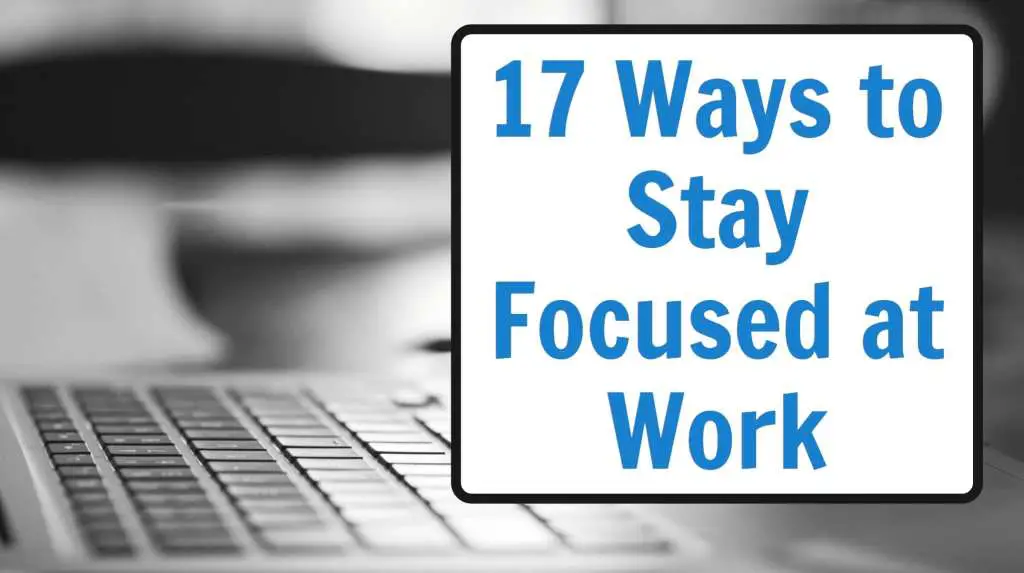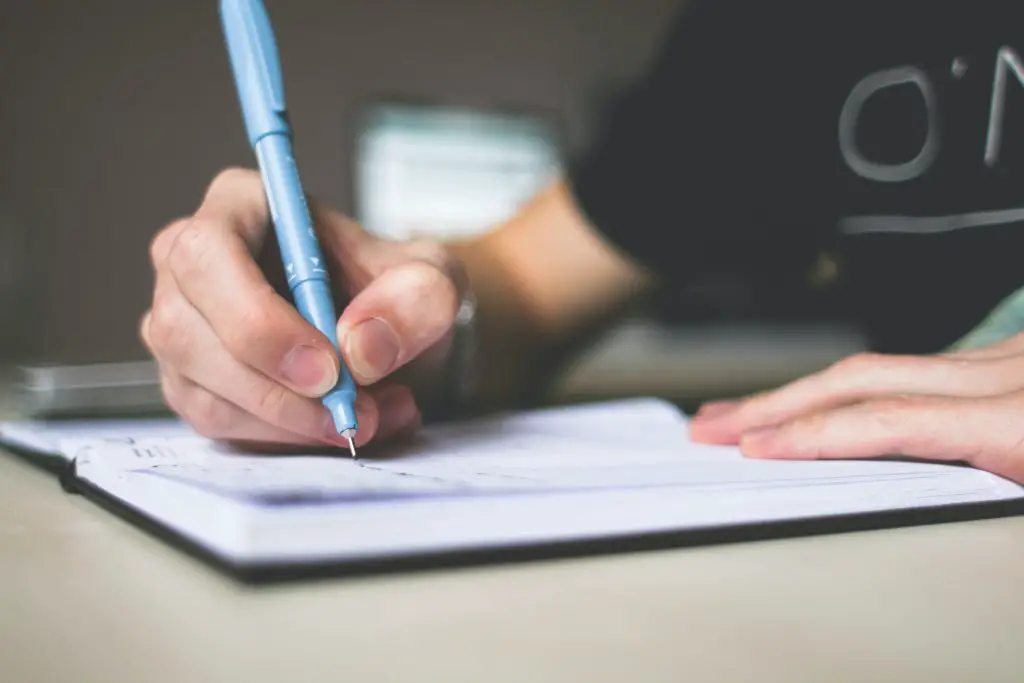This post may contain affiliate links, which means I’ll receive a commission if you purchase through my links, at no extra cost to you. Please read full disclosure for more information.
FOCUS
Finding ways to stay focused at work can be challenging for many. Every few minutes, it feels like your mind drifts away from what you are supposed to work on. Once you finally get into a groove, someone comes and chats with you or you receive a notification from your cell phone.
After lunch, you get hit with the afternoon slump, which leaves you wanting to nap rather than devote yourself to the project you should be working on.
So how do we stay focused? Staying focused at work will depend on three pillars:
- Planning what you want to work on and the direction you want your day to go
- Eliminating distractions
- Priming the body and mind
If you do these three things well, you should have no trouble staying focused. In this post, we will share 17 ways to stay focused work and each one will fall under one of the three pillars.
17 WAYS TO STAY FOCUSED AT WORK
1. Avoid a wandering mind with no direction

A large component of feeling unfocused comes from not knowing what to stay focused on. Oftentimes, we do things that trick us into feeling we are being focused and productive. We check our emails, review our calendars, and stay updated with company news.
It’s easy to cycle through this with a wandering mind without actually getting anything done. Boost focus by defining the purpose of your day and time. The remaining 16 tips can only help you if you know what you are supposed to be focusing on.
Planning your day should ideally take place the night before. It should only take 5 minutes, but will save you hours of time that you would have wasted figuring out what you should work on.
2. Structure your work plan in 30-minute blocks with breaks
When planning your day, plan activities in 30-minute blocks of time. Each block should be separated with a short break. This follows the Pomodoro productivity technique that breaks work down into intervals.
These short chunks of time allow you to focus intensely for 25 to 30 minutes with a scheduled break to look forward to after that. As an employee with a long day ahead, working for 30 minutes is not as intimidating as working 3 hours without a break.
The key during these 30 minutes is to have zero tolerance for distractions. That is what the 5-minute break is for.
3. Organize your workstation
Clean up your workstation so it is neat and tidy. A Princeton study has shown that your eyes and mind can pick up on peripheral objects at your workstation, which can be distracting, as your mind attempts to give those objects attention.
It’s hard to focus on building a financial model when you can see contracts on your desk in your peripherals that need tending to later in the day.
Clear off papers, organize your pens, and wipe down your desk and computer screen. Personally, I feel better and more clear-headed when my work environment is cleared and organized. You may feel the same way.
4. Stop procrastinating things
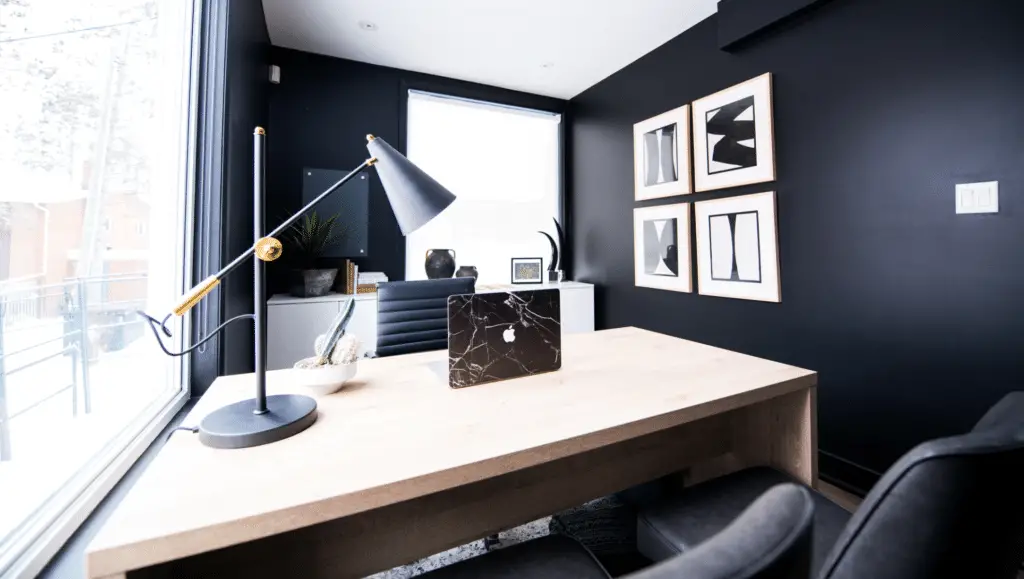
This is much easier said that done and I, like many, still struggle with procrastinating. I have found that procrastination is mostly a habit. Once you allow yourself to put things off a few times, you open the gates for you to continually procrastinate.
Nip it in the bud and stop procrastinating. When you procrastinate, you are unfocused and looking for other things to do to fill your time to feel like you are doing something.
This goes back to actions like checking your email or making sure your calendar is accurate. While those things have some importance to them, deep down you know that you are doing that to avoid the larger tasks on your list.
To focus more at work, avoid procrastination and make the habit of tackling things head on.
5. Take up one thing at a time
Multi-tasking has been confirmed to be counterproductive again and again. It is much better to focus all your time in energy at one task at a time. Think back to using a magnifying glass on a leaf as a kid. You focused the light into a fine needle thin laser that burned through the leaf.
This is how you want to be with each of your tasks. Pay no mind to the rest of your to-do list when you are in the middle of working on something. Focus on the task at hand and get that out of the way before moving on to the next one.
6. Utilize Pareto’s Principle and Parkinson’s Law
In Chapter 5 of the book The 4-Hour Workweek, author Tim Ferriss talks about time management. He recommends using the Pareto Principle and Parkinson’s Law together to increase productivity.
The Pareto Principle states that 80% of outputs come from 20% of the inputs. Parkinson’s Law states that a task will swell in size of importance and complexity based on the time given for that task.
This relates to focus because you can dial in by focusing on the 20% of things you need to do to get 80% of the results for your work. To complement this, you can use Parkinson’s Law to give yourself short deadlines to complete your tasks.
These short deadlines will push you to focus without distraction and wasting time. The more time you give yourself to finish something, the longer it will take.
7. Set a precedent with others that they should not bother you

The next pillar of improving your focus is to eliminate distractions and interruptions. Start by setting a precedent with your colleagues that you are not to be bothered. For example, let them know that between 9:00 am and lunch, you are not available for chit chat. That time is dedicated to getting deep work done.
People will respect your time when you let them know. Learn to say no to small talk and cut conversations short to get back to work.
8. Keep your phone in your drawer
This tips sounds too simple to work, but trust me, it does. Although putting your phone in the drawer still keeps it within arm’s reach, the fact that it is out of sight decreases the frequency that you will reach for it.
This relates to the tip of decluttering your workstation to remove items from your peripheral vision. When you are working and see your phone laying on your desk, it’s tempting to check it. When it’s out of sight, it is more out of mind. For myself, I’ve found that I check my phone half as much when I am unable to see it and store it away.
9. Avoid checking email
After working for a company where I would receive 50-100 emails per day and working for one where I receive a few per week, I realized how distracting emails can be. It wasn’t just the constant notifications that were distracting, but it was the thought of what the contents of the emails could contain.
Don’t let emails pull you away from your work. Turn your notifications off and only check your email at defined times. Between those times, you are focused.
A common concern is “Well what if I don’t read an email that needs my attention?” I would say that 95% of emails don’t require a reply within a few hours. For the other 5%, if an email contained something that was time-sensitive, the sender would call you or come see you at your cubicle.
10. Turn off notifications
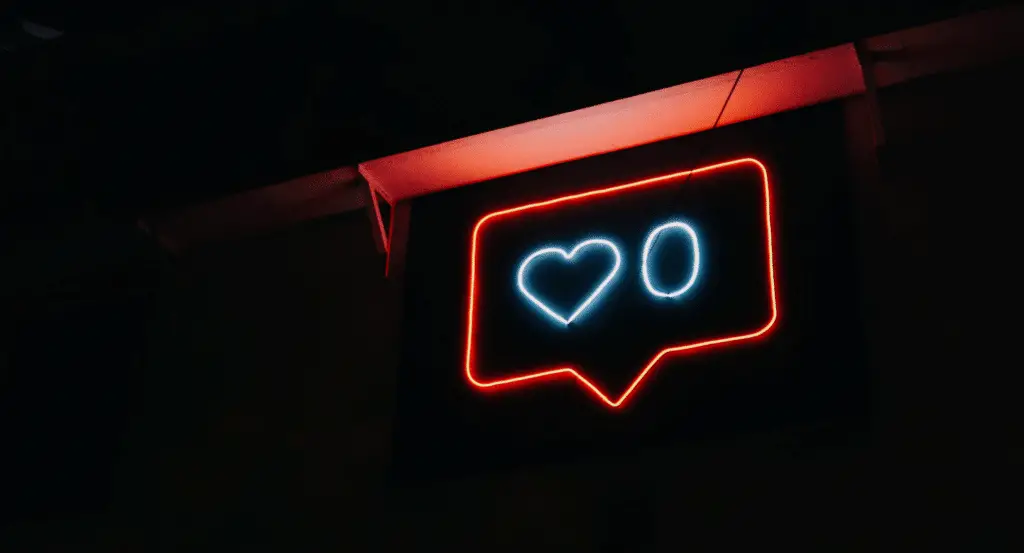
Notifications on your phone cause frequent distractions that can interrupt your train of thought and momentum. Once you hear that ding or feel that buzz, you are tempted to check what it is.
In the book Limitless, Jim Kwik mentions how studies show that it takes over 20 minutes to get back on track once you get distracted. 20 minutes each time. Check out our book review on Limitless. Silence your notifications and the vibrations and store your phone out of sight like we have mentioned.
If you are wearing a smart watch, be sure to silence that too. A quick fix to eliminate distractions from notifications is to turn your phone on airplane mode. One strategy could be to combine this with the Pomodoro Technique we mentioned.
During your 30-minute work interval, set your phone to airplane mode. On your 5-minute break, you can take airplane mode off and check any necessary notifications.
11. Get in flow
Flow is described as an “optimal state of consciousness.” This is a state you can enter where you feel and perform your best. You are totally absorbed by what you are doing and all your attention is focused on the task. Time seems to slow or speed up and things feel effortless.
Simply put, you have probably experienced this when you have had one of those days when you are “in the zone.” This is the peak state of focus and if you can enter flow frequently, you’ll unlock the highest level of focus and productivity.
Getting yourself into flow can be done with many of the tips listed in this post. In his book Limitless, Jim Kwik has an entire chapter dedicated to Flow.
Jim lists out 5 steps to find flow:
- Eliminate distractions
- Give yourself time (it’s believed to take at least 15 minutes to enter flow)
- Do something you love
- Have clear goals
- Challenge yourself….a little
Step 5 is important to flow. You want work that is slightly past your comfort level and abilities. You can move out of your comfort zone by increasing the difficulty of tasks or the circumstances to complete the task.
As an example of the latter, if something usually takes an hour, challenge yourself to do it in 40 minutes. When things are easy, you get bored and can lose focus. When things are too difficult, you become overwhelmed and quit. Find a good balance of challenging yourself.
12. Listen to music
Music can help literally and figuratively shut out the noise and allow you to focus. The sounds and melodies of music have also been shown to improve focus and alertness. Music has the ability to change your mental state.
Throw some headphones on and zone in on your work. I purchased these Bose noise cancelling headphones a few months ago and I’ll never go without them ever again. The combination of cancelling noise and great audio quality for my music let’s me be in my own world.
As for the choice of music, play what suits you best. You probably know what music you work best to. For some, it’s classical music, others EDM. Some like songs with lyrics and others can’t work without singing the lyrics to songs.
Pick what it best for you. To share my own preference, I typically play lo-fi playlists on Spotify. The beats are relaxing and the songs have minimal lyrics.
13. Get your workstation ergonomics right
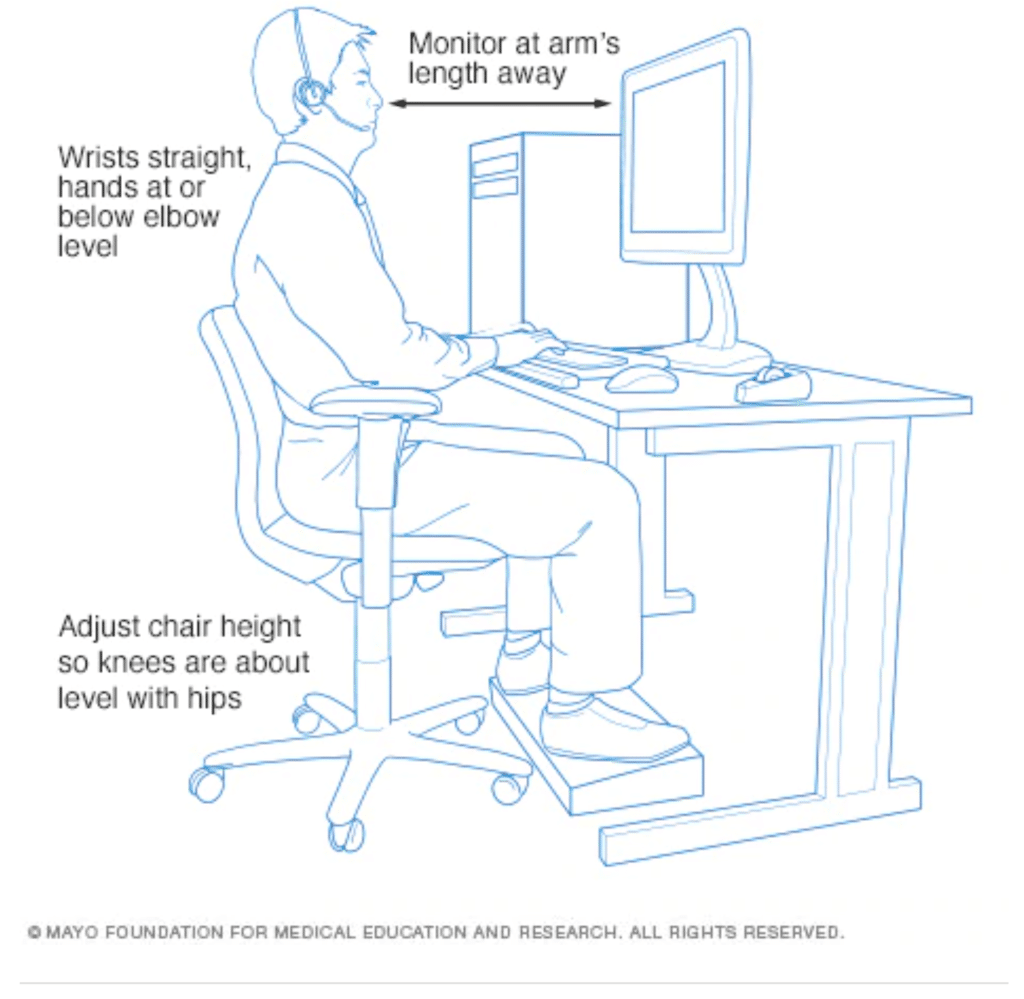
Office ergonmomics involve designing your workstation in the best way to make you feel comfortable and work most productively and efficiently.
Things such as your chair, computer monitor height, mouse, keyboard, and even a footrest can be optimized. Pain and overexertion caused by any of these areas will disrupt your focus. When the ergonomics of your workstation are optimal, you will feel and perform optimally.
Check out this diagram from the Mayo Clinic. It displays the basics of an ergonomic setup and posture.
Here is a common ergonomic checklist you can make sure you have set up:
- Your chair supports your natural spine alignment
- Everything you need to reach for is a comfortable arm’s length away
- Your desk is an appropriate size for your body
- Your feet rest flat on the floor
- The top of your computer screen is set at or just below eye-level
14. Work out in the morning (and midday if you can)
A big component of focus is priming you mind and body to do so. The most impactful tips for focus for me revolve around diet, nutrition, health, and exercise.
Whenever I start the day off with a workout, I feel more energized and focused throughout the day. In the book Spark, John J. Ratey walks through the effects of exercise on the brain. Check out our book review on it.
Increased focus and alertness is one of the byproducts of exercising in the morning. Blood flows, the body and mind are oxygenated, and endorphins and hormones are released that can heighten your mood and senses.
If you have the luxury, work out midday as well. This will wake you up and give you energy for the back half of the day. If you are unable to, a decent walk and maybe 5 minutes of aerobics should do the trick.
15. Eat lighter lunches with fewer carbs and sugars
Diet and nutrition can prevent you from focusing no matter how motivated you are. One way to maintain energy levels and thus focus is to eat lighter lunches and to avoid simple carbs and sugars.
You know that lull you get into after a heavy lunch of fried and cheeseburgers? Well, that doesn’t just happen with every meal. The size of the meal and composition of the meal play a big part in how you feel. The carbs and sugars will spike and crash your blood sugar, doing the same with your energy levels. The size of the meal will require your body to use more energy to digest.
By eating lighter and with healthier options, you won’t have that afternoon slump and you will be able to maintain your focus for the entire day.
16. Use caffeine and supplements

Finally, you can utilize caffeine and supplements. Coffee and tea should suffice. You don’t need to guzzle energy drinks and take caffeine pills. If you take care of all the tips above, you should not have to consume much caffeine. I’ll typically drink coffee or tea after an hour into my work day and about 30 minutes after lunch. The timing is important.
In the morning, when I first arrive, I am fresh and alert and don’t need the boost. After settling in for about an hour, I then drink coffee to carry me through until lunch. After lunch, I’m fresh from the break, so I won’t make my caffeinated drink until a short while after returning from lunch.
For supplements, I take L-Theanine, Alpha Brain, and Bulletproof’s Brain Octane Oil. This stack of supplements work for me and could work for you too. I’m no health expert, so you should check with a medical professional and make sure these supplements work for you and your body.
I’ve tried dozens of supplements that claim to help with energy and cognitive abilities. These ones made the cut over years of trial and error and I feel the difference of when I take them versus when I don’t. They keep me relaxed, yet sharp and alert.
17. Practice focus consistently to break bad habits
Focus is a skill and a habit that can be developed. It will be tough to focus for an extended period of time at first, but it will get easier. Implement the tips in this post and make it a mission to focus more deeply and for a longer duration.
You will build it up and soon find yourself able to focus on your work undistracted and with energy for the whole workday. Take baby steps. Don’t try to go for a 180-degree turn right off the bat. Take small steps forward and stay consistent. This will make things more enjoyable and sustainable.
SUMMARY
Focus and concentration are a necessity to have while doing your job. We all want more of it. When you are focused, you’ll get your work done faster and submit work that is higher in quality.
The great thing is, once you focus and get work out of the way, it frees up time in your schedule and space in your mind to do other things. When my work is done, I work on and read things that interest me. It’s a treat after focused work.
Some of these tips are basic and you have probably come across them before. There is a reason for this. These simple tips are impactful, especially when all 17 from the post are combined.
Figure out what you are doing and where you are going with each day’s tasks. Eliminate all distractions. And prime your body and mind. The tips will help you do those three things and you’ll have laser focus.

